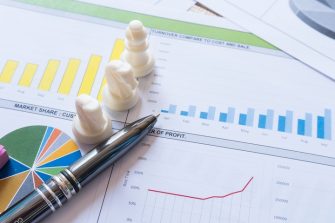
For companies of all shapes and sizes, data captured in the field can provide invaluable information that helps them understand what is happening at different stages of their organization. In order to make smart business decisions, managers and other executives need data to help flesh out their understanding and ensure continuity throughout long-term strategies. That being said, data needs to be collected efficiently and effectively if it is going to have any real impact. Here are some of the best way to make that happen.
1. Interviews

Interviews are the best data collection techniques when you’re looking to get in-depth and targeted information about a relatively small group of subjects. They can be done in person, over the telephone, or even by email.
Depending on how sensitive the subject matter is, it is advisable to have as much contact as possible, as the interview subject is more likely to open up if they feel they’ve established a report with the person asking the questions. Regardless of the nature of the interview, the questions should be clear, simply worded, and enough open-ended responses.
2. Questionnaires and surveys

Questionnaires and surveys are great data collection techniques because, unlike interviews which can produce a lot of confusing material that is not easily categorized, they tend to have results which can be easily analyzed through quantitative methods. Numerical values can be assigned to various answers and evaluated according to a scale.
People are also now used to taking many surveys and as long as the document is laid out in a coherent way, they are generally receptive and even enjoy answering them. There is also now lots of very user-friendly software available to help create sophisticated surveys in minutes.
3. Observation

In this data collection technique, the subject is monitored or viewed in order to collect information. This can be done under a number of different circumstances and it can take place continuously or over set periods of time. Before committing to an observation technique, it needs to be established whether the process will be done in a structure, unstructured, or semi-structured way.
Although valuable data has no doubt been ascertained through observation, it does have certain drawbacks, including the fact that it is time consuming and the circumstances under which it is done can often end up affecting the participants behaviour.
4. Focus groups

A focus group is essentially a group interview that takes place amongst a selected group of people who have something in common. The idea is usually to gather information and to combine perspectives and opinions in order to get a general sense about how a certain topic or issues is being received within a specific community. Following the discussion, responses can be sorted into categories and are usually analyzed thematically.
5. Documents and records

Many data collection efforts begin here, as it is the most widely accessible and easiest to get started. Compiling documents and records means going through the entirety of the available paper trail and identifying what information is relevant for your purposes.
This includes combing through databases, reports, minutes of a meeting, financial records and whatever else you can get your hands on. Although this is generally considered to be a fairly cost-effective technique for data collection, it is important to remember that it does not always yield the most complete results.
6. Checklists

Checklists are an easy and straightforward way to structure a series of points which need to be observed or evaluated. This field data collection technique is easy to implement and gives you the way to make the presence of absence of criteria across a large sample group.
Checklists are also great because they give you the opportunity to note down short comments about a topic and to easily observe trends or discrepancies.
7. Case studies

Case studies are intended to understand a single phenomenon thoroughly by exploring it from different angles. If a case study has been completed successfully, the end result should be a very detailed description of a process, structure, or experience at one organization.
Usually this is accomplished by combining a variety of the other techniques mention, including surveys, statistics, and qualitative data collection. A case study usually involved examining the object of study in as natural an environment as possible, in order to produce the most authentic results.
8. Ethnographies and oral histories

Similar to case studies, ethnographies and oral histories involve examining people in their natural settings or listening to them describe what they are like. Ethnography is the most holistic approach to gathering and evaluating information. Although it can require a lot of resources to do successfully, the results can be hugely valuable in understanding a new subject of study.
Due to the more complicated nature of this form of collecting data, it is crucial that everyone involved in the process is properly trained and aware of their own limitations.









